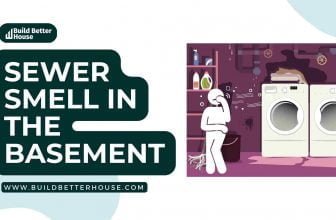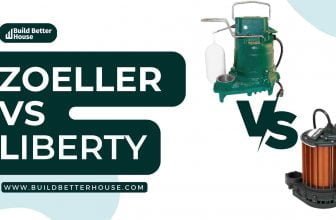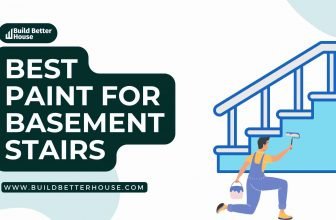Crawl Space Essentials: A Comprehensive Guide for Homeowners
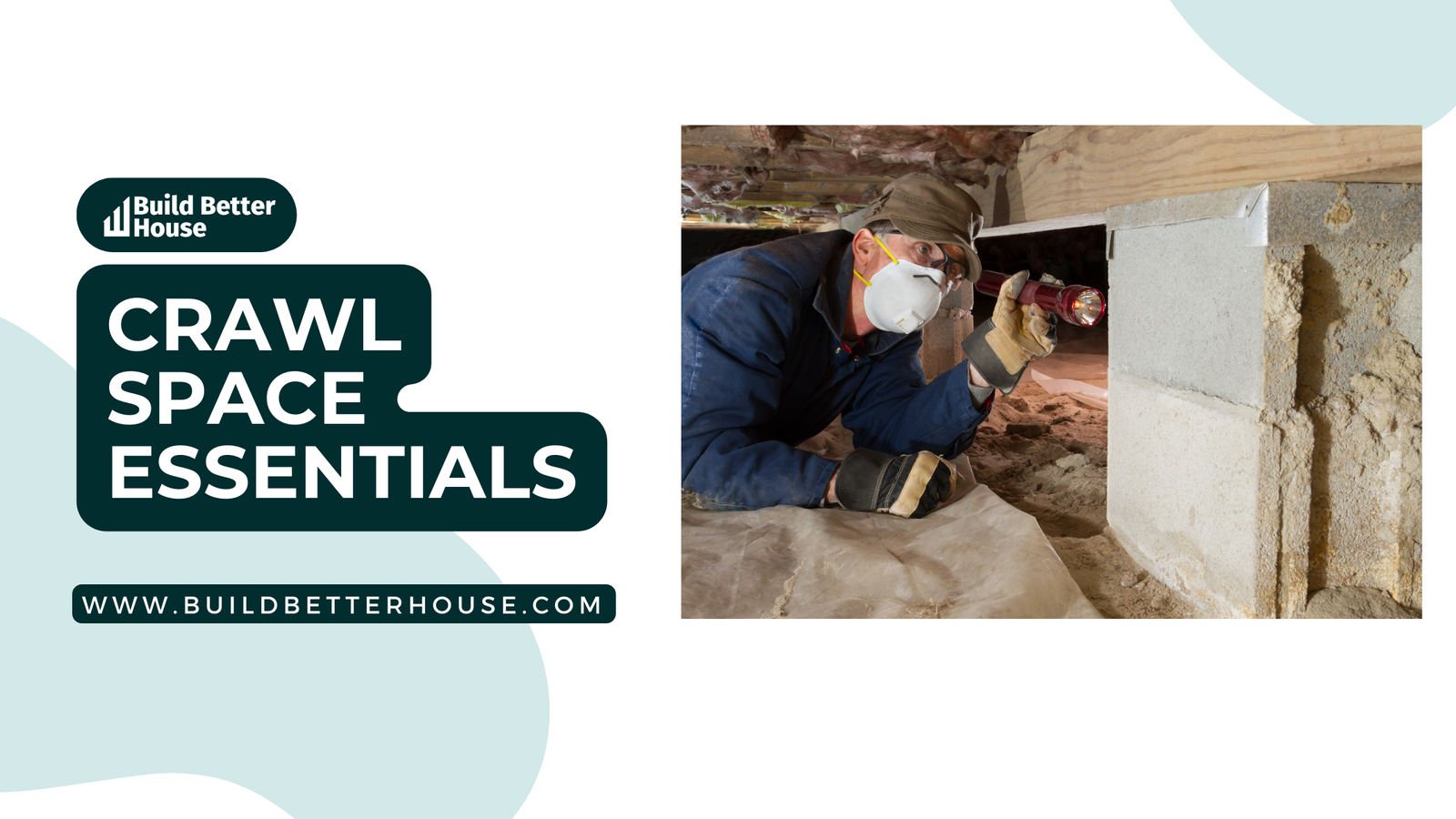
Crawl spaces are a common feature found in many homes, providing a narrow, unfinished area between the ground and the first floor. They are often used to accommodate essential components of a house such as electrical wiring, plumbing, and HVAC equipment. The primary purpose of a crawl space is to elevate the home off the ground, improve insulation, and allow access for necessary maintenance and repairs.
When it comes to crawl spaces, it is important to understand their advantages and disadvantages, as well as the proper methods of insulation, ventilation, and moisture control. Managing these factors effectively can help prevent issues such as mold, mildew, pests, and structural damage. Homeowners should also be aware of the responsibilities associated with crawl space maintenance and the options available for professional services to ensure the overall health and longevity of their homes.
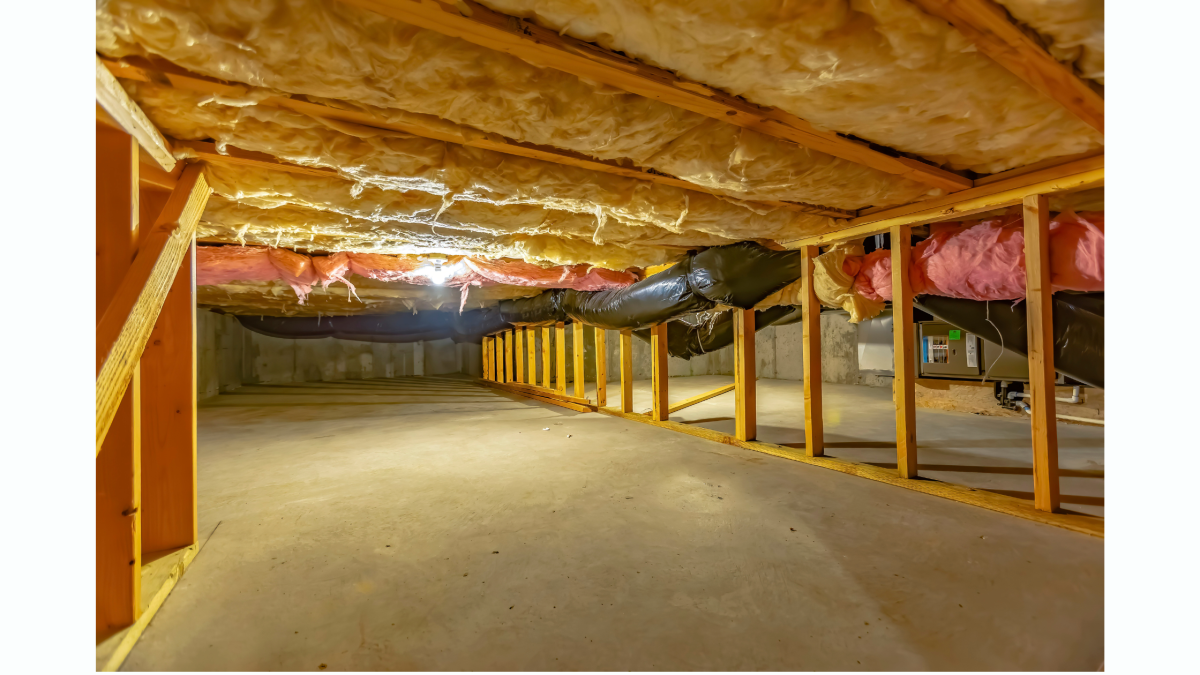
Key Takeaways
- Crawl spaces offer a space for essential home components and improve insulation.
- Proper moisture control can prevent mold, mildew, and pests in crawl spaces.
- Homeowners should be aware of maintenance responsibilities to ensure overall home health.
Crawl Space Basics
A crawl space is a small area, typically ranging from one to three feet in height, that resides between the bottom floor of your home and the ground. Unlike a basement, which is a more expansive and usable space, a crawl space serves a more functional purpose. It provides extra room for your home’s electrical wiring, plumbing components, and HVAC equipment, allowing easy access for maintenance and repairs.
When considering the size of a crawl space, it’s crucial to ensure that it has adequate ventilation. Proper ventilation helps prevent moisture buildup, which can lead to mold growth and contribute to structural decay. According to the International Residential Code (IRC) section 408, crawl spaces should have ventilation openings through foundation walls or exterior walls.
Crawl spaces are especially useful for homes built on sloped lots, as they can adapt better to the terrain than slab foundations with shallow footings. Moreover, they can be insulated with materials such as rigid foam or fiberglass batts to control energy costs and keep your home warm. Insulating cinder block or concrete crawl space walls and sealing the floor is an essential step in maintaining a comfortable temperature inside your house.
In summary, a crawl space is a functional and practical part of your home, providing access to essential utilities, accommodating sloped terrain, and helping maintain a comfortable temperature when properly insulated and ventilated. Make sure to take care of your crawl space to ensure the longevity and efficiency of your home.
Types and Comparisons
When you’re considering the foundation of your home, you have a few options to choose from, such as vented crawl spaces, unvented crawl spaces, slab foundations, and basements. It is essential to understand the differences between these options to select the best fit for your needs.
Vented Crawl Spaces are designed to allow air to circulate, preventing moisture buildup. They typically have vents on the exterior walls that permit airflow. However, these crawl spaces may have trouble controlling humidity levels, potentially leading to mold or rot.
Unvented Crawl Spaces, also known as sealed or encapsulated crawl spaces, offer a more energy-efficient and moisture-controlled environment. The floor and walls are sealed with vapor barriers to prevent moisture from entering the space. This design helps maintain a more balanced humidity level, protecting your home from potential damage.
Basements provide additional living and storage space and are larger than crawl spaces. They are usually at least 8 feet high, whereas crawl spaces range from 18 inches to 6 feet in height. Basements can be finished or unfinished, providing a variety of options for homeowners. However, they can also be more expensive to construct and may require additional maintenance for moisture control.
Slab Foundations are a more affordable option and involve a concrete slab poured directly on the ground. They provide a solid, durable base but don’t offer any crawlspace or basement benefits. Slab foundations are suitable for warmer climates where the ground doesn’t freeze and offer quick construction compared to other foundation types.
When comparing these foundation options, it’s important to consider factors such as climate, budget, and your specific needs. For example, if you live in a warmer, humid area and require minimal maintenance, an unvented crawl space or slab foundation may be the best choice for you. On the other hand, if you want additional living or storage space and reside in a colder environment, a vented crawl space or basement might be more suitable.
Insulation and Temperature
When it comes to maintaining a comfortable temperature in your home, insulating your crawl space plays a crucial role. Properly insulated crawl spaces can help regulate temperatures, reduce drafts, and increase energy efficiency.
One way to insulate your crawl space is by using wall insulation. This method involves applying insulation material to the walls of the space. Spray foam is a popular choice among professionals, but might not be as accessible for the average homeowner. Instead, consider using rigid foam insulation as an alternative. This type of foam insulation is easy to install and provides a high level of thermal resistance.
To begin insulating your crawl space, attach the rigid foam insulation to the walls. Make sure that the pieces fit snugly, and use foam sealant or caulk to seal any gaps or seams. This ensures that no air leakage occurs, further enhancing the insulation’s effectiveness.
Additionally, don’t forget to lay a vapor barrier on the ground. This barrier helps protect your crawl space from moisture infiltration, which can lead to mold and structural damage if left untreated.
During winter months, a well-insulated crawl space is essential for keeping your home warm and cozy. The insulation and temperature control techniques described here can help you save on your heating bills and improve the overall comfort of your living space.
Remember, investing in proper insulation for your crawl space not only enhances the temperature regulation within your home but also contributes to increased energy efficiency. By taking the time to insulate properly, you can enjoy the benefits of a comfortable home all year round.
Moisture and Ventilation
Moisture and humidity in your crawl space can lead to various problems such as wood rot, mildew, mold, and damage to insulation, flooring, and walls. Proper ventilation is crucial to addressing these issues and maintaining a healthy home environment.
In order to manage moisture, you need to evaluate the climate and potential sources of standing water in your crawl space. Standing water may arise from poor drainage, leaks, or even water vapor rising from the ground. If you find any standing water, address the issue by improving drainage or fixing leaks as soon as possible.
Vents play a significant role in crawl space ventilation. They help to circulate air and remove excess moisture. However, in some climates, vents may cause more harm by allowing humid air to enter the crawl space, causing condensation and exacerbating moisture issues. Determine the role vents should play in your particular situation by considering your local climate and consulting with a professional if needed.
One way to address humidity and moisture is by using a vapor barrier, which typically consists of plastic sheeting placed over the ground in the crawl space. This barrier helps prevent water vapor from rising and becoming trapped in the enclosed space. Be sure to carefully seal the vapor barrier at the seams and around the perimeter to maximize its effectiveness. Note that it is essential to consult a professional to ensure proper installation and materials are used for your particular circumstances.
To further improve crawl space ventilation, consider using an exhaust fan or even a dehumidifier. A well-installed exhaust fan can help remove moisture by creating airflow and directing humid air out of the crawl space. On the other hand, a dehumidifier can reduce humidity levels directly, but may require more monitoring and maintenance.
By addressing moisture and ventilation issues in your crawl space, you can protect the structure of your home and create a healthier living environment. Remember to seek professional advice when necessary and conduct regular inspections to ensure ongoing effectiveness.
Mold, Mildew, and Air Quality
Mold and mildew can significantly impact the air quality in your crawl space. Both thrive in damp, dark, and humid environments, which are often found in crawl spaces. It’s essential to address these issues to maintain a healthy living environment inside your home.
Mold can grow on various organic materials like wood, paper, carpet, and insulation, as long as moisture and oxygen are present. When mold grows, it releases spores into the air, which can trigger allergies and even increase the risk of developing asthma. Mildew, often confused with mold, is a form of fungus that also releases spores and shares similar effects on air quality and health.
To prevent mold and mildew growth in your crawl space, ensure to control moisture levels. Ensure all gutters and downspouts are functioning properly to direct water away from your home’s foundation, preventing water seepage. Regularly check for any cracks in below-ground walls to prevent water intrusion.
In addition to the moisture-control measures, it is vital to maintain proper ventilation in your crawl space. Encourage air circulation to prevent stagnant air and condensation, which can contribute to mold and mildew growth. Consider using a dehumidifier to help regulate humidity levels and maintain a dry environment.
By addressing mold, mildew, and moisture problems in your crawl space, you can improve air quality and create a healthier, safer environment for you and your family. Make informed decisions about maintaining your crawl space to prevent potential long-term health risks and damage to your home’s structure.
Pests and Infestations
Crawl spaces in your home can be prone to infestations by various pests such as rodents, insects, and termites. These unwanted visitors can cause damage to your home’s structure, wiring, and insulation, ultimately affecting your living environment.
Rodents like mice and rats are attracted to crawl spaces as they provide a perfect nesting ground. They can gnaw and chew their way through air ducts, pipes, and electrical wiring, posing a threat to your home. To prevent rodents from entering your crawl space, make sure to seal any gaps and keep the surrounding area clean and free of debris.
Insects like brown recluse spiders are known to inhabit undisturbed areas in your home, such as crawl spaces and basements. These spiders prefer nesting in boxes and seldom-used clothing or shoes. Regularly cleaning and decluttering your crawl space can help deter insects from making it their home.
Termites can be particularly destructive, as they feed on wood and can cause structural damage to your home. To prevent termite infestation, it’s important to address any moisture issues in your crawl space and ensure proper ventilation.
A proven method to reduce the risk of pest infestations in your crawl space is encapsulation. This involves laying a durable plastic vapor barrier from wall to wall and taping it down. Encapsulation can help to prevent pests from entering the crawl space, as well as provide increased energy efficiency and improve overall home environment. Hiring a professional is recommended for this task, as they can properly install a tear-proof barrier that keeps pests and moisture out.
In summary, maintaining a clean and well-sealed crawl space is crucial for preventing various pests, rodents, and insects from infiltrating your home. By encapsulating the crawl space and addressing any moisture or ventilation issues, you can protect your property from potential damage and create a safer, healthier living environment.
Encapsulation and Waterproofing
Encapsulation and waterproofing are critical components of maintaining your crawl space’s health and protecting your home from moisture damage. When you encapsulate your crawl space, you’re sealing it off from the external environment, preventing excess humidity and moisture intrusion.
Crawl space encapsulation involves installing a robust vapor barrier, typically a polyethylene material, on the floor and foundation walls of your crawl space. It ensures a dry and healthy living space by preventing humidity, rain, or ground moisture from seeping through the foundation walls and affecting the joists and other structural components of your home.
Before encapsulating your crawl space, it’s essential to clean and assess the area. Remove any debris, rocks, or sharp objects that could potentially damage the vapor barrier during installation. To start the encapsulation process, the vapor barrier material is secured to the foundation walls and edges of the crawl space, creating a seamless barrier to moisture intrusion.
Moreover, waterproofing your crawl space includes sealing any cracks in foundation walls that allow water penetration. This process is necessary to prevent potential damage to your home’s foundation and structural integrity. Small cracks can be sealed with epoxy or polyurethane injections, while more significant cracks or issues might require professional intervention.
In addition to sealing cracks and encapsulating the space, waterproofing may also involve installing a drainage system to redirect water away from your home’s foundation. This measure is crucial in areas prone to heavy rain or where the water table is high.
By encapsulating and waterproofing your crawl space, you are effectively protecting your home’s structural components and improving the indoor air quality. It ensures a healthy and dry living environment, safeguarding your living space for years to come.
Structural Support and Repairs
As a homeowner, it’s crucial to maintain the structural integrity of your crawl space. Structural support and repairs play a vital role in preserving the overall stability of the home. Here, we’ll discuss the importance of support, repairs, and how to address common issues such as slope, frost line, and leaks.
Proper support in the crawl space is essential. A sturdy support system helps prevent the beams and floor joists from becoming compromised, which could lead to sagging, bouncy, or uneven floors. Various solutions are available, such as the IntelliJack System, which provides an effective and long-lasting solution for crawl space foundation problems.
Occasionally, you may need to undertake repairs in the crawl space to maintain structural support. Some common issues requiring attention include water damage, insect damage, rotting structural elements, and foundation problems. The average cost for crawl space repair is around $6,000, but it can vary depending on the extent of the damage.
One factor to consider when addressing crawl space repairs is the slope of the ground. Sloping ground can cause water to collect in the crawl space, leading to issues like rot and mold. Ensuring proper drainage and grading can help mitigate this problem.
Another important aspect to consider is the frost line, which is the depth at which the ground freezes during winter. When building or repairing a crawl space foundation, the foundation must extend below the frost line to avoid frost heave, which can lead to shifting and cracking in the structure.
Leaks in the crawl space can also cause significant damage, leading to issues like mold, rotting wood, and structural damage. Inspecting your crawl space regularly and addressing any leaks or moisture problems is essential to maintain the longevity of your home.
In summary, maintaining the structural support and executing timely repairs in your crawl space is essential for your home’s stability. Proper attention to aspects such as slope, frost line, and leaks will keep your crawl space in a healthy condition, and your home standing strong for years to come.
Electrical and Plumbing Considerations
When dealing with a crawlspace, it is essential to consider electrical and plumbing factors for the safe and efficient use of the space. Electrical wiring and plumbing pipes are often run through the crawlspace as it provides an accessible area for maintenance and repairs.
For your electrical wiring in a crawlspace, you need to follow the proper code requirements to ensure safety and adherence to regulations. Wiring should be secured properly to avoid damage or potential hazards. Nonmetallic wires are typically used in crawlspaces as they are resistant to moisture and less likely to corrode. Make sure to seal any gaps around electrical and plumbing penetrations to prevent air from moving into the wall or living space from the crawl space. This ensures a consistent indoor air temperature without the influence of outside air.
When it comes to plumbing, it’s crucial to plan the routing of pipes efficiently through the crawlspace to minimize the chances of encounters with electrical wiring and reduce the likelihood of leaks, condensation, or other damage. Proper insulation of pipes is essential to prevent freezing during cold months and to reduce heat loss, in case of hot water-carrying pipes.
While working in your crawlspace, always ensure there is sufficient lighting in the area for you to see and maneuver around with ease. Dehumidifiers must be the right size based on square footage and humidity levels, as they help maintain a healthy environment and prevent damage to electrical wiring and plumbing pipes due to excessive moisture.
In conclusion, when addressing electrical and plumbing considerations in a crawlspace, prioritize safety, adherence to code requirements, proper insulation, and adequate sealing of gaps. This will ensure the efficient and well-maintained operation of these essential systems within your home.
Heating and Cooling Systems
When considering heating and cooling systems for your crawl space, it’s essential to weigh the pros and cons. Installing a heating, ventilation, and air conditioning (HVAC) unit in your crawl space can present both benefits and drawbacks. To make an informed decision, it’s crucial to understand how these systems can impact your home’s overall energy efficiency and comfort levels.
An effective heating and cooling system can reduce energy costs and create a more comfortable living space. Adequate insulation in your crawl space is key to achieving these benefits. Depending on whether your crawl space is ventilated, unventilated, or if you’re unsure of the difference, various insulation options are available to meet your needs.
For example, spray foam and foam boards are popular insulation choices for crawl spaces. These materials help maintain a consistent temperature in your crawl space and can prevent frozen pipes and moisture buildup. Additionally, they contribute to improved air quality within your living areas and protect the structural integrity of your home’s foundation.
Ductwork is another crucial component of your heating and cooling system, especially in the crawl space. To ensure optimal performance, air seal all ductwork with a mastic system and install it with the appropriate R-value according to your local code requirements. Properly sealed and insulated ducts will not only improve energy efficiency but also prevent air leakage and buffer noises from the HVAC equipment.
Lastly, controlling moisture vapor in the crawl space is essential for maintaining a healthy environment. Supply air from your home’s air conditioning system can help regulate humidity levels, preventing mold growth and other moisture-related issues. Make sure to adjust the supply air volume as needed according to your local residential code requirement.
In conclusion, to achieve optimal results with your heating and cooling system, ensure adequate insulation, proper ductwork, and sufficient moisture control. By carefully considering these factors, you can create a comfortable and energy-efficient crawl space for your home.
Storage and Space Utilization
Utilizing your crawl space for storage is a smart way to maximize space in your home. With careful planning and preparation, you can transform this often-underused area into a functional and organized storage area.
Before you start, consider the height of your crawl space. Ensure it has enough room for storing items without causing damage or creating a hazard. It’s essential to make sure your crawl space is clean, dry, and free from mold and pests.
To make the most of your crawl space, install shelving or racking systems to keep your belongings off the ground and organized. This ensures easy access whenever you need to retrieve your stored items. Additionally, it’s a good idea to invest in durable, waterproof storage containers to protect your belongings from moisture and other potential damage.
Optimizing your crawl space for storage doesn’t only benefit you in terms of space utilization, but it also has other advantages. By keeping your crawl space clean and organized, you promote better air circulation and reduce the risk of mold and mildew growth, thus improving your home’s overall indoor air quality.
In conclusion, turning your crawl space into a storage area is a practical solution to maximize space and enjoy multiple benefits in your home. Ensure that the area is clean, dry, and well-maintained to make the most of this additional storage space.
Potential Problems and Solutions
Crawl spaces can present several potential problems that can impact your home’s integrity and safety. By addressing these issues, you can protect your investment and ensure a healthy living environment.
One common issue with crawl spaces is freezing temperatures, which can cause pipes to freeze and burst. To combat this, ensure proper insulation is installed around your pipes, and consider using heat tape to provide additional protection. Insulating the crawl space walls and floor can also help maintain a stable temperature and reduce the risk of freezing.
Gaps and cracks in the crawl space walls or foundation can lead to moisture intrusion and unwanted pests. To combat this issue, inspect your crawl space regularly for any signs of gaps or cracks. If you notice any, use a durable material like polyurethane foam to seal the gaps. Polyurethane foam is a reliable solution, as it expands to fill the gaps and provides a strong, waterproof seal to prevent moisture and pests from entering your crawl space.
Poor ventilation in your crawl space can lead to high humidity levels, causing mold and mildew growth, wood rot, and unhealthy indoor air quality. To address these issues, ensure your crawl space has adequate ventilation using properly placed vents and fans. Additionally, consider installing a vapor barrier, such as a thick layer of polyethylene plastic, on the crawl space floor to help reduce moisture buildup.
Lastly, structural issues can arise in your crawl space due to water damage or wood rot. Regularly inspect your crawl space for any signs of sagging floors, rotting beams, or damaged supports. If you find any issues, consult with a professional to assess the damage and provide appropriate solutions to reinforce the affected areas and maintain your home’s structural integrity.
By addressing these potential problems in your crawl space, you can ensure a healthier and safer home for you and your family. Remember to inspect your crawl space regularly to identify and resolve problems promptly, ensuring a well-maintained and protected living environment.
Professional Services
When dealing with crawl space issues, it’s essential to rely on professional services to ensure the safety and effectiveness of the solutions implemented. Professionals have the experience and tools necessary to address common crawl space problems such as moisture, structural damage, and radon gas.
Hiring the right professional, like an engineer, can make all the difference in protecting your home from any potential damage caused by these issues in the long run. By conducting a thorough inspection, engineers will identify the root cause of the problem and recommend the most suitable solution for your crawl space.
One standard approach to addressing these issues is the installation of a radon mitigation system by a certified expert. Radon is a radioactive gas that can seep into your home from the ground, and long-term exposure can lead to health issues. Installing a radon mitigation system in your crawl space ensures the reduction of radon levels, thus protecting your family’s health.
In addition to radon mitigation, it is vital to properly maintain and repair your crawl space. This may involve sealing any cracks and openings in the foundational walls, as well as installing a vapor barrier to reduce moisture transfer. Using high-quality materials, like the right tape, ensures a secure and effective seal.
Professional crawl space services also offer cleaning and encapsulation. This process involves removing any debris and contaminants from the area and sealing it with an encapsulation system that prevents moisture infiltration, mold growth, and pest infestations. This service helps maintain a healthy indoor environment while preserving the structural integrity of your home.
In conclusion, trusting professionals with your crawl space needs is crucial for long-lasting protection. By conducting inspections, implementing radon mitigation systems, and ensuring proper maintenance, these experts can help secure your home and promote a safer, healthier living environment.
Crawl Space in Different Regions
In coastal areas, crawl spaces are often implemented in residential construction to elevate the lowest floors above the Base Flood Elevation (BFE) level. By using a crawlspace foundation, you can protect your home from potential flooding and its associated damages. However, extra precautions and proper ventilation systems are necessary to manage the humidity and moisture commonly found in these locations.
High moisture regions, such as those with heavy rainfall, can also present challenges when it comes to crawl spaces. A moist, soggy environment in your crawl space may lead to mold growth and increase the risk of wood rot. It’s essential to install an effective moisture barrier and ensure proper ventilation to prevent these issues from affecting the overall health of your home.
In some cases, the surrounding environment may directly impact the choice of using a crawl space versus a different foundation type. For example, if the ground consists of expansive clay soil, a crawl space might be a more suitable option as it helps absorb the ground’s movement. Conversely, if you’re situated in an area with a high water table, a crawl space might not be the best choice due to the potential risk of flooding.
The excavation process for a crawl space is less intensive compared to a full basement. This often results in lower construction and labor costs. Furthermore, the shallower depth of a crawl space typically means less time spent on site and a quicker completion rate. It’s worth considering the excavation requirements of your region when selecting the most appropriate foundation type for your home.
Lastly, it’s important to understand the difference between a crawl space and a concrete slab foundation. A slab consists of a single, thick layer of concrete poured directly onto the ground, whereas a crawl space is an elevated foundation that creates a gap between your home and the ground. Slab foundations are often less expensive and require less maintenance, but they may not provide the same level of insulation or access to utilities as a crawl space. Your choice should be based on factors such as regional conditions, construction requirements, and personal preferences.
Indoor Air Quality and Health
Indoor air quality plays a significant role in your health and well-being. Since you spend most of your time indoors, it is crucial to maintain a healthy environment within your living areas, including your crawl space. Poor indoor air quality can cause various health problems and exacerbate existing conditions such as asthma, allergies, and respiratory issues.
To ensure the air quality in your crawl space remains at an acceptable level, consider taking the following steps:
- Install a properly-sized exhaust fan to maintain negative pressure in the crawl space. This will help prevent the buildup of pollutants and moisture that can lead to mold growth and other health hazards.
- Add a complete moisture barrier to the crawl space floor to limit the intrusion of ground moisture. This will help protect your home’s structure and improve the air quality.
- Seal any floor penetrations, such as gaps around pipes, to reduce air leakage and the entry of pollutants from the crawl space into your living areas.
- Test and balance your ventilation system to ensure adequate airflow throughout the entire house, including your crawl space.
Pay attention to the presence of common indoor pollutants, such as radon, secondhand smoke, combustion pollutants, volatile organic compounds (VOCs), and asthma triggers. Proper ventilation, source control, and regular maintenance can help minimize these contaminants and improve the overall indoor air quality.
Remember, maintaining a healthy indoor air quality not only impacts your comfort but also your long-term health. By taking steps to improve the air quality in your crawl space and living areas, you can create a safer and healthier home environment for you and your family.
Dehumidifiers and Exhaust Fans
Maintaining proper humidity levels in your crawl space is essential to prevent mold, mildew, and moisture damage. Two popular options to consider for controlling humidity are dehumidifiers and exhaust fans.
Dehumidifiers are devices that reduce humidity levels by extracting moisture from the air. They are particularly helpful in damp or humid areas, such as crawl spaces. When selecting a dehumidifier for your crawl space, it’s recommended to choose one with a larger capacity than you might actually need. This will allow the dehumidifier to dry your space more efficiently and reduce the frequency of emptying the water tank.
Exhaust fans are another option for regulating humidity levels in your crawl space. These fans work by circulating air and expelling moisture from the space. Installing an exhaust fan with a humidistat can be a great solution, as the fan will automatically operate when humidity levels exceed your desired range. This helps to keep your crawl space well-ventilated and prevents excess moisture buildup.
To decide between a dehumidifier and an exhaust fan for your crawl space, consider your specific needs and the amount of moisture you are dealing with. Dehumidifiers are generally more effective at extracting moisture and can be beneficial in areas with high humidity levels. On the other hand, exhaust fans are a more energy-efficient option and may be sufficient for spaces with lower humidity levels.
In conclusion, both dehumidifiers and exhaust fans can be valuable tools when it comes to managing moisture in your crawl space. Assess the needs of your space and choose the option that will work best for your situation.
Homeowner Responsibilities
As a homeowner, it’s essential to understand your responsibilities when it comes to maintaining your crawl space. Your crawl space is the area between the first floor of your home and the ground. It provides a space for electrical wiring, plumbing components, and HVAC equipment. Proper maintenance is crucial for the overall health and safety of your living environment.
One of the primary responsibilities you have is to ensure that the crawl space walls are well insulated. Proper insulation helps regulate the temperature and humidity levels, preventing condensation and mold growth. Pay close attention to the section of the wall below the frost line, as this area is more susceptible to damage from ground moisture.
You should also check for any signs of water intrusion or leaks in your crawl space, as these can cause structural problems and promote the growth of mold and mildew. Regularly inspect the walls, flooring, and any other components for signs of moisture, and promptly address any issues you find.
Ensuring adequate ventilation is another important task you should focus on. A well-ventilated crawl space helps reduce humidity and prevents moisture-related problems. Make sure your crawl space has the appropriate number and size of vents, and clear any blockages that may be restricting airflow.
In addition, it’s vital to maintain the cleanliness of your crawl space. Debris, trash, or other materials can accumulate in the area and attract pests, potentially causing damage to your home’s infrastructure. Regularly clear out the space, ensuring that it remains free of clutter.
Lastly, be prepared to address any pest infestations that may occur in your crawl space. Insects and rodents can cause significant damage to your home’s structure, so it’s essential to take timely action if you notice an infestation. Consult with a professional exterminator for appropriate treatment options.
By being diligent and proactive in maintaining your crawl space, you will not only preserve the structural integrity of your home but also create a healthier and more comfortable living environment.
Frequently Asked Questions
What are the advantages of a crawl space?
A crawl space offers several benefits, including easier access to your home’s utilities, such as plumbing, electrical wiring, and HVAC systems. This access can make maintenance and repairs more manageable. Additionally, a crawl space foundation is typically more affordable to construct compared to a full basement.
How can I identify if my house has a crawl space?
To determine if your house has a crawl space, look for small vents or access doors along the foundation of your home. You can also check inside your home for a small door or panel providing access to the crawl space. If you’re still unsure, consult your home’s blueprints or ask an expert.
Are homes with crawl spaces more energy efficient?
Homes with crawl spaces can be more energy efficient if the crawl space is correctly insulated and sealed. This helps minimize air leakage, reducing the load on your HVAC system. Proper insulation and sealing techniques will prevent moisture build-up and mold growth, leading to a healthier living environment.
Is a crawl space safe in severe weather conditions?
A well-constructed and maintained crawl space can offer protection against some severe weather conditions. Adequate drainage, proper grading, and waterproofing can help prevent flooding and moisture issues. However, in extreme situations like floods or tornadoes, a crawl space may not provide the same level of protection as a basement.
What is the purpose of a crawl space access?
Crawl space access is essential for performing routine maintenance, repairs, and inspection of utilities. Regular access allows you to detect and resolve potential issues, such as plumbing leaks, electrical problems, or pest infestations, before they become critical.
How to maintain a healthy crawl space?
To maintain a healthy crawl space, ensure that it’s properly insulated, sealed, and ventilated. Regularly inspect for signs of moisture, mold, or pest infestations. Resolve any plumbing leaks or drainage issues promptly, and consider installing a vapor barrier to help control humidity. Conducting annual inspections and addressing any problems quickly will help maintain the health and safety of your crawl space.



